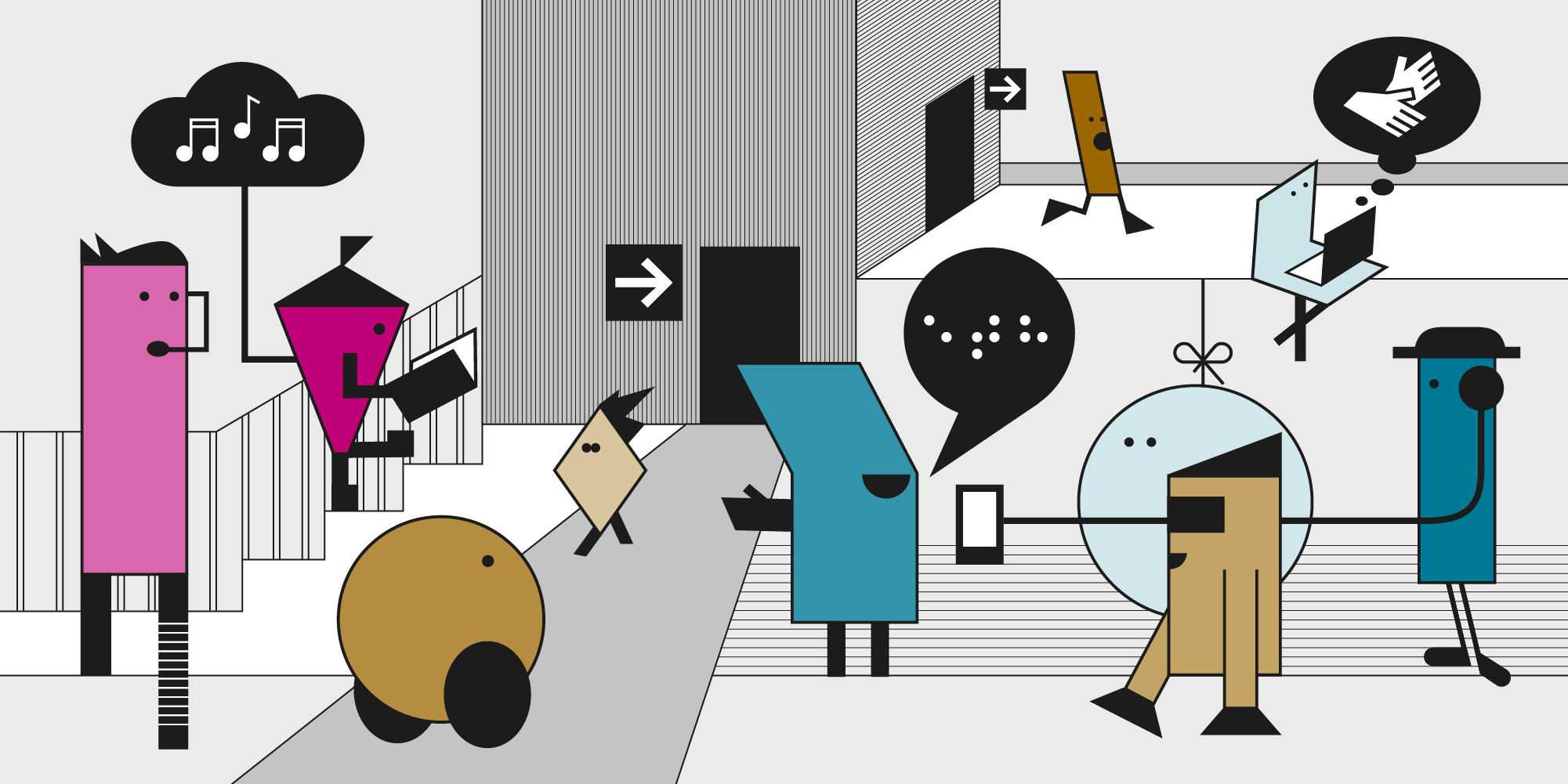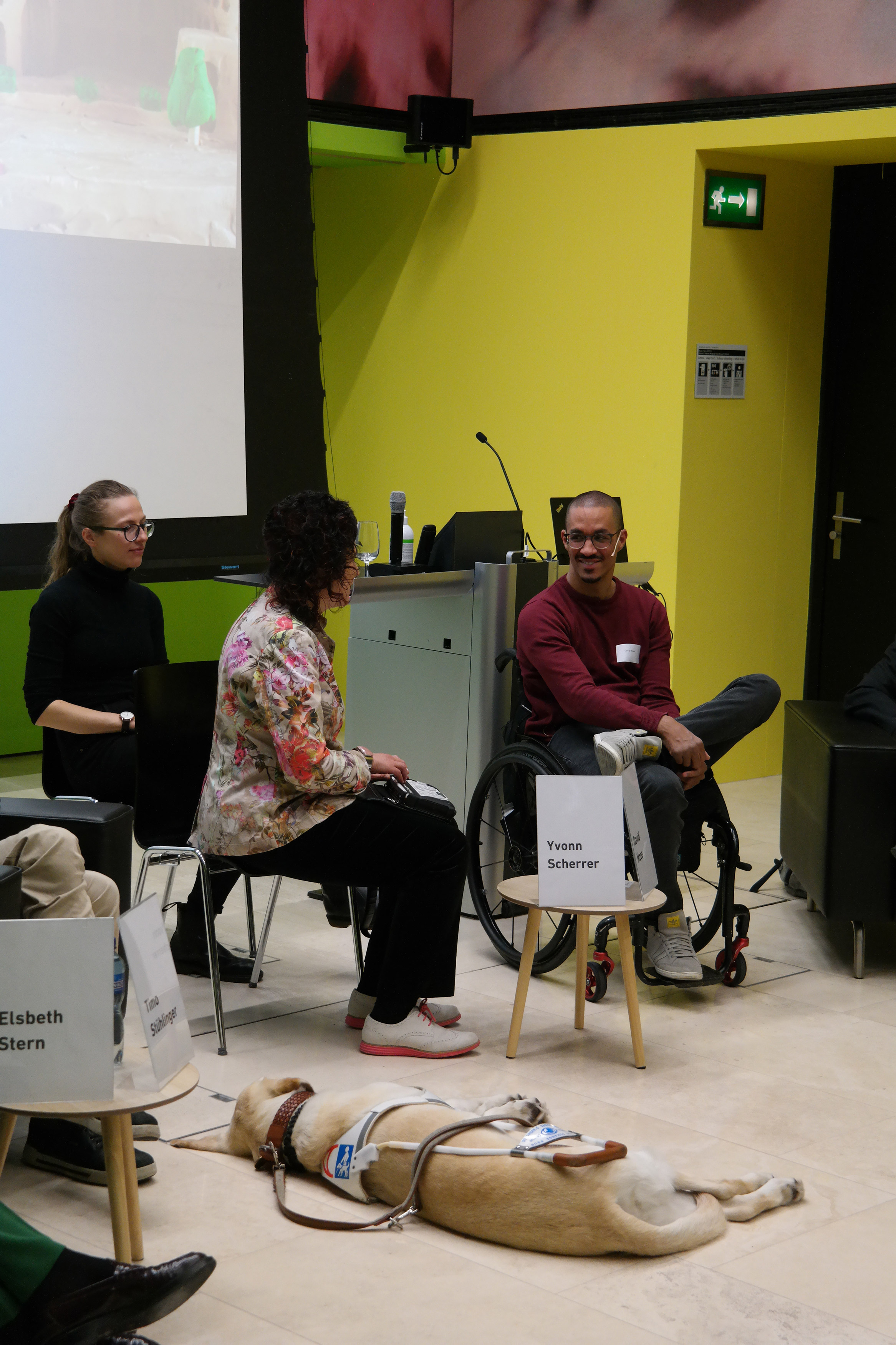Accessibility affects us all
The United Nations Convention on the Rights of Persons with Disabilities (CRPD) calls for an inclusive education system – including at higher education level. At a panel discussion on 20 April, affected students, teaching staff and persons with expertise in the field of teaching talked about the possibilities and limitations of accessibility in education.

Professor Ulrich Weidmann, Vice President for Infrastructure, came straight to the point in his welcoming address: “Anyone can be affected, whether permanently or temporarily. Disabilities are not an exception, but part of reality. More than one in ten are affected by it at ETH.”
The sports teacher in a wheelchair
David Mzee is one of the persons affected. He was studying sport science at ETH and while training did a somersault from the trampoline into the so-called “landing pit”, a depression in the floor filled with foam cubes. The landing pit had always fulfilled its purpose when jumping, but with this somersault he came crashing onto the floor. Since then he has been confined to a wheelchair and has had to completely reorganise both his day-to-day life and his studies: “It’s understandable that ETH wasn’t optimally prepared for a sports teacher in a wheelchair. But I was overjoyed at the way people responded: the support I received from heads of institutes, teaching staff and students was fantastic. I was even carried up stairs. However, outdoor weekends in the mountains posed a challenge.”
Brain parts are used in a new way
The new challenges in day-to-day life can help to bring out new skills, as Elsbeth Stern, Professor of Research on Learning and Instruction at ETH, emphasised: “Scientific studies have shown that in the case of people who are blind, parts of the brain for visual information are used to process acoustic information. Such people can hear a lot more nuances in conversation and quickly gauge moods. Blind people are also used to feel tumours.”
These abilities could also be sensed at the panel discussion. For example, Yvonn Scherrer started her moderation with a request to the audience: “I notice that the atmosphere here in the hall is rather drowsy. Stand up for a minute, shake your neighbour’s hand and knock on your chair.” Yvonn Scherrer is blind, which means that she is unable to see tired faces, but merely to sense the general mood.
Four prerequisites for barrier-free teaching tools
The active start caused merriment in the audience and fulfilled its goal perfectly. The audience followed what Gerd Kortemeyer, Head of Educational Development and Technology, had to say eagerly. What exactly is meant by barrier-free teaching tools? First of all, it must be possible to navigate documents, i.e. headings must be placed. Secondly, it should be possible for mathematical formulas to be read out by the screen reader. A screen reader is an app that reads out digital contents and is used by visually impaired and blind people. Thirdly, in the case of charts, the data should also be stored. Although the curve is not visible, the data can be read out by the screen reader. Fourthly, illustrations should have subtitles or an alternative text, i.e. a description of the image so that this can also be read out. These and other ways of making teaching and teaching materials accessible were vividly illustrated in videos and comics.
Timo Stühlinger, who is currently studying interdisciplinary sciences and has a hearing impairment, also reported on barriers in his studies: “For example, in order to be able to follow a lecture, I need to be able to receive everything that is said directly on my hearing aid. Sometimes the acoustic systems don’t work or I can only receive the signal in certain places.”
What became clear and was also intensively discussed later on during the drinks reception was that ETH is right on track with its “Barrier-free at ETH Zurich” programme. Inclusion should not merely be a trend, but must be sustainably practised as an “innate ETH attitude” at our university, as Ulrich Weidmann underlined.
Barrier-free at ETH Zurich
ETH Zurich is committed to being barrier-free: over the course of the next few years, people with disabilities or special needs – whether students, teachers, researchers, staff or visitors – should benefit from greatly improved access to ETH buildings and services.
The proposed measures will be implemented in 14 subprojects under three categories: “Construction, building usage and architecture”, “Organisation and culture” and “Technology, communication and teaching”.
For more information on the programme and the 14 subprojects, visit the programme website.
Always up to date
Would you like to always receive the most important internal information and news from ETH Zurich? Then subscribe to the "internal news" newsletter and visit Staffnet, the information portal for ETH employees.

Comments
No comments yet